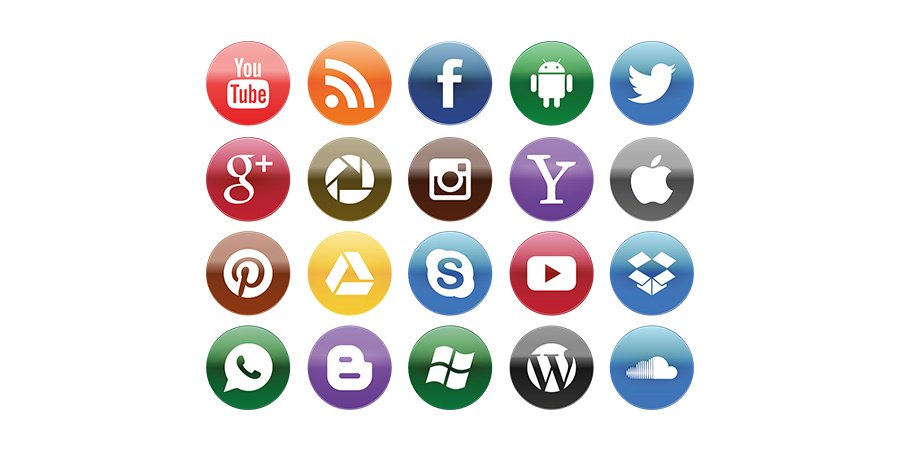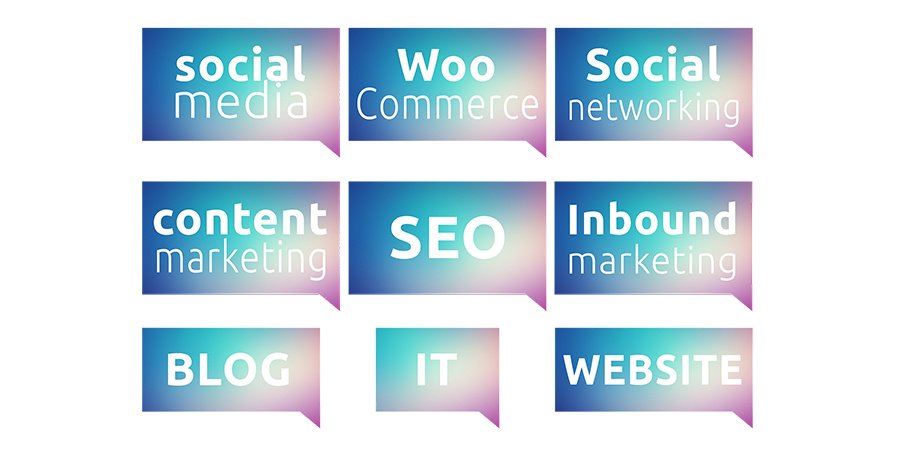The recruitment industry is bigger than ever, worth over £35 billion to the UK economy. So, the industry knows a thing or two about adapting, managing to thrive and grow when many other parts of the UK economy are struggling.
However, technology is disrupting the recruitment world, so to maintain growth, the recruitment industry needs to be constantly looking ahead. From AI to Email we’ve compiled our top 18 recruitment industry trends that all recruiters should be aware of.
Don't just take our word for it though, we have sourced the views of industry experts for their take on how these trends are redefining the recruitment industry.
Without further ado...
6. Workplaces Will Continue to Change
11. Reshape The Interview Process
15. The Boom of Flexible Working
18. In-House And Executive Searches
1. AI Will Disrupt

"Artificial Intelligence is inevitably going to have a major impact on the future of the recruitment industry. There will always be a need for the human element in senior and specialist recruitment sectors, but when you look at some of the manual tasks that recruiters carry out on a daily basis further down the value chain, there's no doubt that AI will be able to automate many of them, leading to major improvements in efficiency."

- Steve Thompson (MD, Forward Role Recruitment)
As ever, artificial intelligence (AI) continues to disrupt industries across the globe, offering new technological opportunities for companies everywhere and risking manual, labour intensive roles.
Recruitment, in particular, is heavily affected by this new technology.
As many businesses will confirm, the process of recruitment can be lengthy and time-consuming. More and more often, recruitment businesses across the world will need to be using AI somewhere within their recruitment process to keep the competitive advantage.
According to Entelo's 2018 Recruiting Trends Report, talent acquisition professionals spend, on average, nearly 1/3 of their work week (about 13 hours) sourcing candidates for a single role. Nearly 1 in 3 respondents spend over 20 hours and 70% of respondents agreed that sourcing automation would increase productivity.
Chatbots, for example, are becoming increasingly commonplace in recruitment (which we’ve written about more in-depth here). Recruiters will also begin to use AI on their websites as personal assistants, where they can ask candidates about the jobs they’re looking for, and start to lead them automatically towards the hiring process.
AI used correctly can be a force for good. Offering a smarter, more efficient way of recruiting that can be used alongside consultants in a unified and structured approach. Increased productivity generally lowers costs, and lower cost entrants to the recruitment market have the potential to disrupt the establishment.
In order to be at the cutting edge of technology advancement, recruitment agencies need to invest heavily in both improvements to existing systems and game-changing technologies. Adrian Adair, Chief Operating Officer for Morson group, explains:
“We’ve completely revamped our end-to-end recruitment technology Vencuro with improved functionality and user-friendly interface. We’ve also invested in the recruitment sourcing and screening technology SniperAI, which incorporates machine learning and auto-screening to vastly save time and money throughout the recruitment process. We’ve added web accessibility software which enables 27% more of the UK population to access our online recruitment process. The software ensures that there are no barriers in place to hold talented people with disabilities such as dyslexia, visual impairment and learning difficulties back.”

- Adrian Adair (COO, Morson Group)
For many recruitment businesses, it’s easy to get left behind in this digital world. We don’t need to tell you how competitive, fast-moving and dynamic the industry can be, so it’s vital that recruiters keep a firm eye on the horizon.
2. Analytics Are In

Analytics are not new, but big data (combined with AI above) will play an increasing role in the recruitment process in the future. Speed is a vital component of recruitment - the best candidates don't hang around for long - so using analytics to improve recruitment processes internally will be essential.
And with analytics, come algorithms. According to an article by the Wall Street Journal, many established companies are re-evaluating their hiring tactics and including analytics in the mix. Companies such as Unilever are even making use of algorithms and analytics to attract new recruits.
To quote:
“Resumes are out, algorithms are in. To diversify its candidate pool, the company relies on software to sort applicants and targets potential hires on their smartphones.”
This shows a shift from the more traditional recruitment process of telephone or face-to-face contact at every step, to a far more digitalised practice where algorithms and analytics are used to identify candidates before making contact with them.
It’s huge for such a big player like Unilever to go down this route, so it’s pretty much assured that more big companies will turn to algorithms in their hiring practices as 2018 and 2019 marches on.
3. Where The Job Hunt Lives

The advertising space for the recruitment industry has become a busy, jostling affair with lots of competition. According to Entelo's 2018 Recruiting Trends Report, 88% of respondents will invest in their social media presence in 2018.
However, that space looks to become even more crowded as bigger players opt for more room, most notably on Facebook and Google.
Google set out in search of recruitment success when they created their independent search engine for job listings. Facebook has also added a job openings feature, challenging LinkedIn for space in the recruiting business.
These are big developments, as it indicates that power companies like Facebook and Google are not scared of straying from their primary services and muscling in on a recruitment leader like LinkedIn.
And if they’re successful, you can bet that others will follow suit.
However, while social media may seem like a great platform to find and contact candidates, it is important to realise that the landscape is not that straightforward anymore.
Leading recruitment experts have noticed that the constant bombardment of social media is having a desensitising effect for recruitment:
"If recruiters are simply relying on platforms such as social media for their outreach, they might be missing out on the elite candidates who have become tired of constantly being chased. These types of candidates have migrated to platforms such as GitHub where they can make contributions to their industry and are more likely to be open to outreach."

- Andy Wadsworth (Director, ECOM Recruitment)
4. Inbound, Inbound, Inbound

Marketing is vital for any business but many recruitment companies have been slow on the uptake for inbound marketing. This is understandable, if outbound (telephone and adverts) have worked for so long why upset the applecart?
However, the applecart has already been upset (see 1 to 3 above!) and GDPR has hastened the decline and lessened the effect of outbound marketing.
So looking ahead to the future, recruiters must build a brand presence and attract the best candidates to their business through inbound marketing channels. The best candidates will not be so visible or accommodating to outbound marketing practices in the future and the best adopters of inbound marketing will have a competitive advantage.
By attracting candidates to their business, they’re using the inbound methodology.
TalentLyft summarises the role of inbound in recruitment:
Inbound Recruiting is a method of creating targeted, branded content for your recruiting center specifically for the purpose of increasing your Employer Brand recognition and candidate engagement with future hires.
To learn more about inbound marketing, check out our blog: The Four Pillars of Inbound Marketing.
5. Email Isn't Dead

In our digital world, every industry now uses email marketing in some form, and for good reason too.
Despite logic suggesting that email marketing would be on the decline, according to Entelo, it is still ranked the most used (51%) and most effective (39%) channel to reach candidates.
However, whilst email marketing is not dead, the spam email is. In this post-GDPR world, candidates and businesses have become more aware of their rights when it comes to emails and consent. So, in order to survive and reach the desired inbox, your email cannot just be good - it has to be great.
What makes the difference between a good email and a great email? The answer lies in personalised content, effective automation, efficient design and an engaging subject line. Recruiters will need to ensure their emails are the best they can be, and then use analytics to review, test and perfect.
How to create the perfect email is for a different article but at glance first, you must make sure that you are GDPR compliant and that your candidates have given you permission to email them, or else you risk paying a massive fine. Secondly, here are a few quick tips for running an effective email campaign:
- Build up your mailing list—start with contacts you already have and include any previous customers who may be interested in what you’re up to. The best way to build up your list is to use various calls-to-action (CTAs) on your website that direct candidates to sign up to your mailing database in return for job alerts. You can also offer valuable content in return for their information, such as eBooks or webinars that’ll help them in their job search.
- Design your email—there are a few key components you should pay attention to such as subject line, text in your email, images, and CTAs. Write a compelling subject line, try to use as much whitespace as possible in your email, and include big and bold CTAs, and you’ll be good to go.
- A/B Test—A/B testing is when you test two emails with the general same copy but with different components to see which ones are more effective. You can test varying colour schemes, CTAs, the length and tone of your copy, images in your email and so much more, then combine the most effective elements into one email to optimise click-through rates to your website and landing pages.
Want to know more about creating and sending the perfect email? Book a free consultation with one of our experts.
6. Workplaces Will Continue to Change

Equal opportunities and diversity in the workplace is, rightly so, a continued hot topic at the moment. According to a survey by SHRM, as many as 57% of recruitment agencies said that their talent scouting strategies are designed to attract a diverse range of candidates. However, that leaves 43% who do not have a strategy in place.
Diversity is not just a social issue, it is increasingly becoming a business issue with financial benefits for companies who employ a diverse workforce. Looking ahead, those recruitment agencies who attract a diverse workforce within their own organisations will reap the benefits in an increasingly competitive market.
But it's not just the people that make up the workplace that is changing. The way in which we work is also going through a shift at the moment and it's something that recruiters should have their eyes on.
Finlay James Recruitment announced their vision for the future of recruitment - Project Freedom. This is a working format that sees the abolition of micro-management and an opportunity to trial the idea of having no set hours or set workplace. Essentially, recruiters are given the freedom to work when, where and how they want.
It may sound radical but here's what the project's founder had to say:
"Project Freedom shows that, when afforded more trust in their roles, employees are more productive, more efficient and more engaged. What the project means for our clients and candidates is that we can offer increased flexibility of communication. We can make ourselves available at almost any hour of the day, which ultimately gives us a competitive edge. What the project means for our people is an enhanced work-life balance, leading to happier employees and increased retention."
- John Gaughan (CEO, Finlay James Recruitment)
It's not just the people in the workplace that are changing, but the workplaces themselves. Look for the rise in coworking design spaces that offer advanced workplace culture policies and on-site perks.
7. The Effects of GDPR

Finally, let’s tackle GDPR. If you’re still unsure as to what the General Data Protection Regulation (GDPR) is, you can consult our series of blogs on the subject.
GDPR for businesses means stricter control on how companies can process and control user data. This came into effect on 25 May 2018 and influenced industries across the board.
That said, few industries are as impacted by GDPR as much as recruitment. In fact, sector by sector, GDPR is actually affecting the recruitment industry the most.
Because the recruitment industry is people-facing by nature and uses candidate data online to find appropriate roles, agencies are obliged to bolt down their data processes. If they neglect to do so, then they risk paying up to €20 million euros as a fine, or 4% of their annual turnover.
Agencies store a mammoth amount of personal data, and under that premise, the industry has been quite fruitful - becoming one of the UK’s most successful with an intake of £35.1 billion.
The effects of GDPR are wide-ranging, from security to marketing and 2018 and 2019 will see a consolidation of the rules and a bedding in period whilst the ICO begins to take a stand against those in breach. Recruitment companies need to get ahead and ensure they meet the GDPR obligations.
So, if your agency hasn’t already become GDPR compliant, then don’t wait and risk the fine! Download our eBook now and see how you can become compliant in a few simple steps.
8. Attracting the Best Talent

The recruitment industry, fairly or not, has a reputation for high staff turnover. Research shows that up to 45% of recruitment professionals have left the industry after only 9 months.
In today’s ultra-competitive working environment this is a statistic that needs to be addressed. Some recruitment companies are leading the way by investing in their own employer branding and recruitment process to attract and retain the best talent. We expect this trend to continue for the foreseeable future - commercially it makes clear sense.
According to LinkedIn, 75% of candidates research about a firm's reputation and employer brand before applying for a job, and in a recent study recorded by Onerec, out of 250 professionals with hiring responsibilities, 40.2% revealed that establishing a strong employer brand was their top business priority this year.
In the digital age, it can be difficult to stand out from the crowd. An employer branding marketing strategy is essential then to build a strong brand that attracts the best talent.
One part of that marketing strategy can include a dedicated career site. Many large employers and recruitment companies are making the investment now into their own career sites.
According to Global Talent Trends, candidates often don't apply immediately after hearing about a job. Instead, 59% look up the company’s website, so a careers page with meaningful content can be a goldmine to attracting quality applicants.
Take a look at Airbnb’s career page for a great example of a careers page in action.
To support a careers page, a social media strategy aimed at potential candidates designed to promote your brand, culture and working environment is a fast and affordable way to target the right talent to work for you.
Michelle Derungs, Marketing Manager at online recruitment company Hiring Hub had this to say:
"Since joining Hire Hub, I have witnessed how employers are flocking to recruitment agency marketplaces. I think for three reasons: reach, convenience, and speed.
Online marketplaces make it easier for employers to get their vacancies to a wide audience of vetted, specialist recruitment agencies, but in a super-controlled way; getting access to more agencies means a bigger candidate pool, increasing their chances of finding better talent. And it’s much faster too.
This, coupled with the fact that the recruitment industry is fragmenting at pace, makes it harder for employers to find and choose recruiters, and winning business difficult for independent recruitment agencies. Marketplaces bridge this gap, and are proving to be a major and positive disruptor in the industry.”
- Michelle Derungs (Marketing Manager at Hiring Hub)
9. ‘On-the-Go’ Recruitment

Leading recruiters are engaging candidates increasingly via smartphones and paying attention to the trend of effortlessly directing their recruitment process for the ‘on-the-go’ candidate or business.
Mobile job search is going to be the primary source of recruiting candidates in 2019. According to Talentnow, Job searches from mobile devices now exceed one billion per month while close to 90% of those job seekers now utilise a mobile device when looking for a new opportunity.
There is an immense potential for recruiters to tap in and reach out to this massive audience by enhancing and enriching their mobile recruitment experience.
“There is so much out here to help you in your daily recruiting activities. Especially if you are a small or start up business. Now texting your candidates is a big thing - why? Because we all keep our phones, tablets and laptops as close to us as our heart beats within our chess. Candidates are more likely to reply to a text quickly as opposed to replying to an email. It is said that Text Recruiting boast a near-perfect read rate of 98% response rate.”
- Naima Lynah (President, Open Positions For You)
The ‘on the go’ mobile experience includes mobile responsive websites, apps and communication built for mobile. In the recruitment sector, business is won on the speed of the process - finding that exceptional candidate or business first - so those recruiters with a seamless mobile experience will gain the competitive advantage.
Expect this trend to develop as more and more candidates resort to mobile job searches and more businesses seek those recruiters who can demonstrate their mobile prowess.
10. Referrals Rule the Roost

Increasingly, you are no longer picking the talent, the talent PICKS you.
According to Bullhorn, existing candidate referrals ranked as the single best source for high-quality talent in 2018, we expect this trend to continue.
Referred hires are faster than recruiting a traditional candidate because less time is spent on recruitment processes such as crafting job posts, wading through résumés of candidates that don’t fit the bill, and screening applicants. Referred candidates can often be simply interviewed.
A study into this trend by Jobvite has shown that candidates who were placed as the result of a referral begin their job positions quicker than applicants found on job boards and career sites by as much as 29 days. It has also been found that placements made as the result of a referral stay in their position longer than a traditional hire.
Candidate referrals increasingly garner the highest number of qualified hires. This is not a trend in isolation, it is closely linked to recruitment companies investing in their own brand, mobile reach, and customer experience (see points 8 and 9!).
11. Reshape the Interview Process

Traditional interviews are by no means dead. However, new processes are changing the landscape of how interviews are conducted and structured. Asking candidates about their skills and experience has been the industry standard for decades but new interviewing techniques are being welcomed to the recruitment scene. Let’s take a look:
- Soft Skills Assessment - High-tech tools that draw on neuroscience now exist to assess candidates’ soft skills, such as flexibility and teamwork through surveys and mini-games. Recruiters are able to gain insights into these skills quickly and at a scale and speed which makes it easier to expand their reach on talent pools with diverse backgrounds.
- Virtual Reality—This hot-trending technology is a common topic of recruitment. VR helps recruiters to assess decision-making and problem-solving skills. (see point 12 for VR in detail).
- Video Interviews—Definitely nothing new but this growing trend in video interviews allows recruiters to consider more remote candidates. Video interviews are particularly useful for roles where communication and presentation are crucial.
- Job Auditions—These allow recruiters to see their candidates in action, while a job audition also allows a candidate to get a real sense of the job role. Throwing candidates in the deep end lets recruiters get a realistic sense of their skills.
Interview processes in the recruitment industry have changed a lot in recent years. As the candidate experience continues to be an integral part of the recruitment process, we expect that recruitment interview processes will continue to evolve alongside the changing technology on offer.
12. Exploring Virtual Reality

Unsurprisingly, the video games industry continues to be a one of the largest proponents of virtual reality, however, it might surprise you that the recruitment industry is steadily adapting to the computer technology that creates simulated environments.
With this technology ever-growing in popularity, recruitment agencies are rapidly recognising the benefits virtual reality has to offer. Failing to keep up with this trend only results in agencies falling behind their competitors.
The possibilities of virtual reality in the recruitment industry are far from few. Benefits for recruiters using the technology include the ability to host live interviews in a virtual office room environment. They will also be able to offer candidates a full virtual reality experience of their potential companies workspace and culture. Jet.com allowed candidates to experience its office culture from wherever their candidates were using VR.
Equally, expect jobseekers to make use of the available technology. Jobseekers could start to embrace virtual reality to showcase skills and competencies that enhance their online profiles. We expect this trend to gain plenty of momentum as the technology enhances and grows.
13. More Personal Branding

With a particular focus on LinkedIn, the professional network has become a comprehensive personal branding resource for the jobseeker market. Today’s jobseekers are polishing their profiles to become an essential personal branding tool.
With over 500 million members across the networking platform, jobseekers are implementing video content to build their own personal engaging brand and stay ultra-current. Truth be told, video content sets profiles apart from their counterparts and, with recruiters looking for the most highly skilled candidates on the market, those using video will stand out from the pack.
Varun Choraria, Founder and CEO of WiseWords Interactive Studio Pvt. Ltd., said LinkedIn is the best business professional social media channel. Written by Entrepreneur, Choraria said:
"Here's the profound, true secret that you may have not known (no-brainer, actually), LinkedIn has become the best tool for personal branding and it's guilty of being that because since the beginning of Mesopotamian times, customers have always preferred the "human touch" over a cold and pretentious "corporate caress"
Like Choraria states, personal branding using video offers a level of ‘human touch’ that can’t be portrayed with images. After all, a video can give priceless information when recruiters visibly see the way candidates walk, talk, move, dress etc.
As jobseekers now make video an integral part of their LinkedIn profiles, this growing trend means that recruiters can now gain a deeper insight into the potential candidates they are placing.
14. Recruiting Gen Z

Most recruiters are probably thinking, “Gen Z! Another generation to figure out”. The truth is, they couldn’t be more wrong. Attention needs to be paid to this new breed of millennials who are in a league of their own, far more aware than the those that came before but, this time, they’re more pragmatic.
The latest Gen Z-ers are fresh off the graduation train and ready to join the workforce. Now, recruiters are tasked with facilitating these unique individuals who value independence over collaboration in the workplace.
Recruiters must keep a close eye on the constant changes of the digital landscape and meet Gen Z candidates where they are. This is most likely Snapchat, with the generation using the social media platform up to 11 times a day on average.
Gen Z also possess excellent research skills as they’re more likely to turn to the internet first to answer their questions. Recruiters are now tasked with reaching out to Gen Z with innovate content that's more likely to capture their attention spans - an average of only eights seconds. This means shorter job descriptions and content that includes videos, emojis, and animations that aid in getting the message across.
"Workplaces are evolving faster than ever before. Advances in technology coupled with facilitating the requirements of a multi-generational workforce have accelerated change. But as the last of the baby boomers hit 63 years of age in 2018 and will soon disappear from the working landscape, the shift in workplace design will focus on accommodating the needs of millennials and Gen Z workers. For the recruitment industry, as with other sectors which suffer from higher than average churn, expect to see workplaces which are designed to appeal to this younger demographic. This will mean agile, flexible and coworking spaces, on-site perks such as gyms and gaming zones and an advanced workplace culture policy."

- Andrew Jackson (Marketing Director, Opus 4)
Gen Z also ranked professional development as the most important factor when it comes to choosing a job. This was closely followed by upward mobility. Recruiters are now tasked and must demonstrate development opportunities within job placings as well as job stability, work-life balance, and factors like social impact.
Expect this trend to continue as more recruiters invest in the Gen Z talent.
15. The Boom in Flexible Working

There has been a significant increase, over the past year, in the number of candidates looking for flexible working roles. This, in turn, has been matched with employers generating highly skilled temporary job openings in an effort to find these ideal candidates.
This rise in job openings, however, threatens the business world due to the fact that there will soon be more job highly skilled vacancies than there are highly skilled candidates to fill each role. These candidates are now in greater demand.
Observed by The Business Magazine, the challenge of talent employment is now reaching new competitive levels with businesses still very keen to hire, but 77% anticipate a shortage of suitable applicants. They also note that more businesses are relying on temporary and contract staff.
This trend means recruiters face ultra-high levels of competition to acquire and place the most ideal candidates against the surge of increasingly available temporary roles.
The highly skilled, flexible-working trend also has employer repercussions. Skills shortages are putting existing employees under significant pressure, reducing morale, increasing workplace stress, and stifling career ambitions. These issues are encouraging employees to consider leaving their jobs for better work-life improvements and salaries.
Recruiters aware of this trend are a step ahead in the game, able to engage early with these potentially highly skilled, passive candidates for future placements and openings.
16. Social Recruiting

As the social media industry rapidly grows and evolves, social recruiting is increasingly more relevant and a more popular recruiting strategy than ever before. Recruiters have found that social media allows them to narrow the candidate pool more efficiently to quickly find qualified individuals for job openings.
In the recruitment industry, filling job positions is at an all time high with the average timescale for placing candidates taking 27 days, according to Betterteam. They also state that 48% of CEOs said their companies lost money due to inefficient recruiting.
It is now no surprise that 89% of companies now say they plan to recruit using social media. Businesses now need to ensure their social networks are relevant and appealing. Traditional recruiting strategies are no longer enough because they rely on finding prospective employees in a way that is time-consuming and expensive.
This trend means social media offers recruiters the chance to tap into the passive candidate market as well as targeting selective candidates and screening potential applicants.
Social media offers recruiters a more diverse collection of candidates than there ever has been. Recruiters also cite social media as the best source of high-quality candidates. With the advances in social media technologies, expect the popularity of social recruiting to increase into 2019 and beyond.
Don't forget, social recruiting is just one element of a successful marketing strategy for recruiters.
17. Decreased Hiring Costs
With candidates in greater demand and the number of job openings on the rise (refer to point 15), the recruitment sector has seen a significant increase in competition which has had an impact on generating new business.
2018 saw a 46% growth on its previous year for the number of recruitment agencies that registered with companies house. This growth is the action of higher competition among recruiters to source both candidates and companies for new business which now attributes to agencies offering lower fees. Managing Director of Recruit4Talent, Anita Dale, explains:
“Market saturation has driven down the average recruitment fee, as many agencies offer lower fees in order to gain business, prioritising cost over quality of service. This also means that both candidates and companies are being inundated with calls/emails from recruiters. Where recruiters were once seen as a valuable resource, their ubiquity means that we are often seen as a “necessary evil,” making it harder to build new relationships.”

Anita Dale (Managing Director, Recruit4Talent Ltd.)
An increasingly alarming trend for the industry, we expect to observe the average offer fee to continue to fall as recruitment agencies look to acquire new business in an increasingly demanding and competitive environment.
18. In-House And Executive Searches

The recruitment industry is seeing more and more employers utilise in-house recruitment teams and executive searches as these offer distinct advantages external recruitment agencies don’t.
In-house recruiters are maximising the expectations of their candidates by offering a more bespoke service. Compiled with the support of the brand and the entire hiring team behind them, in-house recruiters conjure a high level of trust and control for the candidate.
Internal recruiters are the front line and the candidates introduction to the business and will always better understand the company culture than a recruitment firm. This, in turn, increases the credibility of the role they are hiring for and provides an unrivalled candidate experience, ensuring their organisation stands out.
The search for executive talent continues to evolve throughout the year and beyond. Recruiting for executive positions requires a particular kind of recruiting talent and one that’s aware of its own trends. For example:
- Focus on younger talent — The executive workforce looks younger than ever. Expect executive recruiters to increasingly focus on developing young talent, candidates that will guide employers forward.
- Commitment to employee development — More and more employers will look within the walls of their businesses for the executive talent they need. This will help to drive results and reduce costs for them.
- Big data and deep analytics — This trend has been continuously growing as executive searchers harness data and analytics, making the difference in gaining a competitive edge.
The search for executive talent is never-ending and this trend will continue to evolve in the coming months.
The recruitment industry is changing as technology influences the way people recruit and search for jobs. Those recruiters that keep ahead of recruitment industry trends and continue to invest in the latest marketing and technology will thrive.






